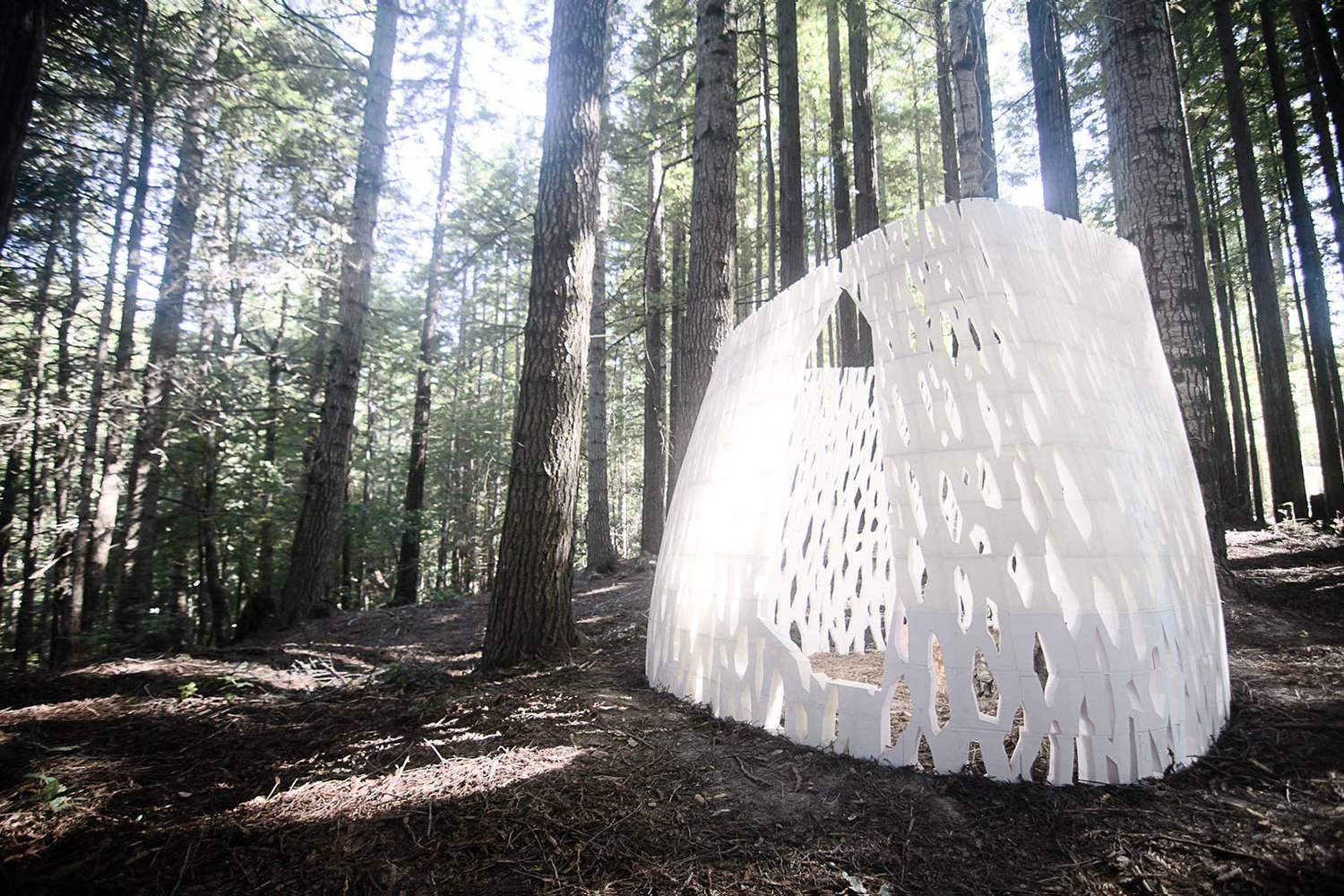Echoviren, a site-specific modular pavilion and claimed to be the world’s first 3D-printed architectural building, created by the Smith|Allen firm in California, 2013, replicate and abstract the xylem and phloem of the redwood forest life that surrounds the architectural piece in a light-dappled bucolic redwood forest.
A 10 x 10 x 8-foot pavilion is made up of 585 parts printed on seven Type A Machines Series 1 desktop printers. The components had been assembled on location after being printed for two months and 10,800 hours by printers. They snapped together to form an igloo-like building with a hole in the top from the parts, which were each up to 10×10 inches in size. The building will dissolve over time and vanish after 30-50 years since each component is composed of PLA bio-plastic derived from plants. As it ages and weathers, “it will become a micro-habitat for insects, moss, and birds,” the designers wrote.
‘Echoviren’ is a term derived from coastal redwood trees, which signifies “always living” or “always growing,” according to the creators. Nearly 600 PLA (cornstarch) modules were used to build the pavilion, which has a cone-like shape with the top slightly squeezed and twisted, allegedly to boost structural stability. The cells of sequoia trees have been expanded and abstracted to depict the perforated construction modules. There is a sense of unpredictability to the structure’s design, which is obviously influenced by natural shapes seen in the forest. As a result, the materiality of the object does not detract from its aesthetic appeal.
The building was created in a redwood forest as part of Project 387, a program for artists in residence in Mendocino County, north of San Francisco. According to Allen, “the texture of the structure is based on a study of sequoia cell shapes”. This structure enables the trees to sustain enormous strength while maintaining little volume.”



























Leave a comment